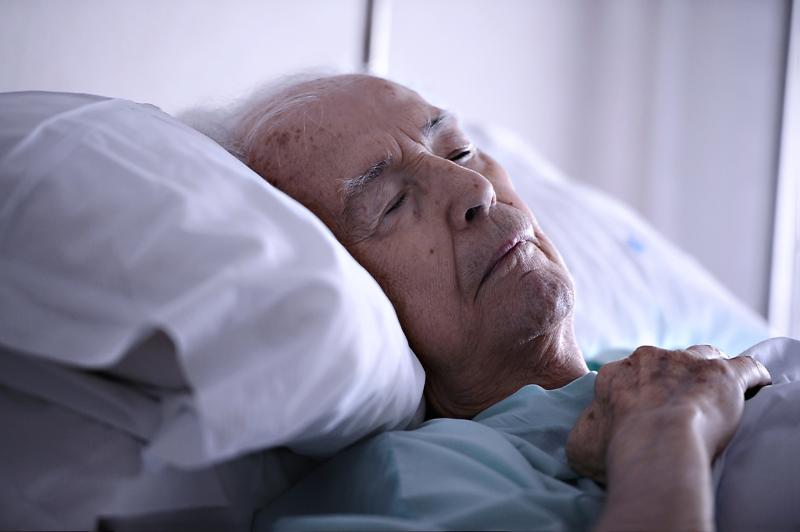
A novel monitoring system touts contactless detection of cardiac arrest by identifying the gasping sound of an agonal breathing event, a study reports. This tool is expected to reduce the number of unwitnessed cardiac arrests that occur in private residences.
Developed by a team of researchers at the University of Washington, the system is designed to run passively on a smart speaker—such as Google Home and Amazon Alexa—or a smartphone to continuously monitor for an agonal breathing event, which is an audible diagnostic marker of cardiac arrest, while people sleep.
The proof-of-concept monitoring system can accurately classify said events >90 percent of the time from up to 20 feet or 6 metres away in a domestic setting. Upon detection, it raises an alert to anyone nearby to provide cardiopulmonary resuscitation (CPR) or automatically calls an emergency hotline in the absence of immediate response.
Agonal respiration is believed to be an underappreciated diagnostic element of cardiac arrest. Approximately 50 percent of individuals who experience cardiac arrests take agonal breaths, according to 911 call data.
“This kind of breathing happens when a patient experiences really low oxygen levels,” co-corresponding study author Dr Jacob Sunshine, an assistant professor of anaesthesiology and pain medicine, said in a statement. “It's sort of a guttural gasping noise, and its uniqueness makes it a good audio biomarker to use to identify if someone is experiencing a cardiac arrest.”
Singling out gasping sounds
To develop their detection algorithm, Sunshine and his colleagues used audio clips from 911 calls in the Seattle metropolitan area over an 8-year period that captured agonal breathing instances during confirmed cardiac arrests. A total of 162 calls were collected, yielding 236 2.5-second clips of agonal breathing sounds.
The team played the clips and recorded them over distances of 1, 3 and 6 metres, in the presence of interference from indoor and outdoor sounds, at different volumes, and when a noise cancellation filter was applied. This was done to simulate what it would sound like if the patient was at different places in the bedroom. Recordings were captured on different devices—an Amazon Alexa, an iPhone 5s and a Samsung Galaxy S4—resulting in a final sample of 7,316 audio clips of agonal breathing (positive dataset).
For the negative dataset, the researchers generated 7,305 sound samples using ambient household noise and 83 hours of audio captured during sleep studies. These samples comprised typical sounds that people make in their sleep (eg, snoring, apnoea or breathing), as well as interfering sounds that might be present in a bedroom while a person is asleep (eg, podcast, sleep soundscape and white noise).
The resulting algorithm was run natively on commodity smart devices (Amazon Echo and Apple iPhone) and shown to accurately classify a breathing sound as agonal (area under the curve, 0.9993) with an overall sensitivity of 97.24 percent and specificity of 99.51 percent. [NPJ Digit Med 2019;doi:10.1038/s41746-019-0128-7]
False alarms occurred 0.14 percent of the time over 82 hours (117,985 audio segments) of polysomnographic sleep lab data and 0.22 percent of the time over 164 hours (236,666 audio segments) of sleep data collected across 35 different bedroom environments, in which volunteers had recorded themselves while sleeping in their own homes. The false positive rate notably dropped to 0 percent for both tests when the researchers had the device classify a sound as agonal breathing only after detecting two distinct events at least 10 seconds apart.
Clear proof of concept
One advantage of a contactless detection system is that it does not require a cardiac arrest victim to be wearing a device while asleep in the bedroom, which can be inconvenient or uncomfortable, Sunshine and the others pointed out. This solution is compatible with existing wired smart speakers and thus overcomes the problem of power constraint.
“Potential downsides include that, to date, agonal breathing has been identified in ~50 percent of cardiac arrest victims, so people experiencing an unwitnessed cardiac arrest without agonal breathing would go undetected by our system,” they wrote in their paper.
Nevertheless, the team believes that the present data serve as a good proof of concept. They noted that they would need to get access to more 911 calls related to cardiac arrest, as well as to further improve the accuracy of the algorithm and guarantee its use across a larger population.